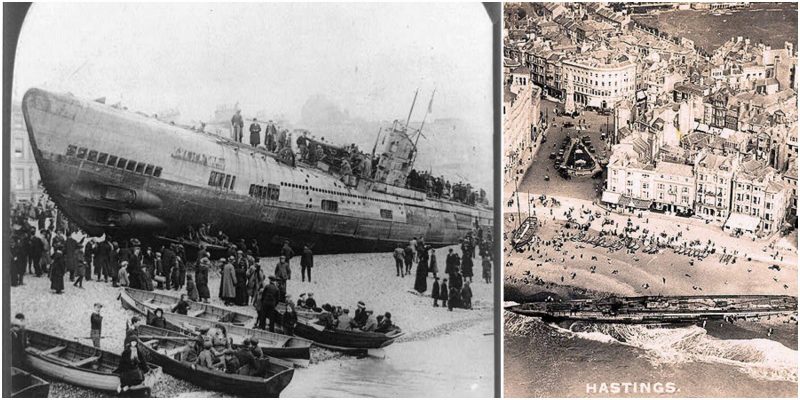The Imperial German Navy created the SM U-118, a type UE II mine-laying submarine, as one of 329 German submarines that served during World War I. The SM U-118 was commissioned on May 8th, 1918, following its construction at the AG Vulcan Stettin shipyard in Hamburg.
They weren’t aware that their pride and glory would become a seaside attraction in Hastings, England. It was commanded by Kapitanleutnant Herbert Stohwasser and joined the I Flotilla, operating for only one year in the Atlantic theater of war. After four months without sinking any ships, SM U-118 demonstrated its power.
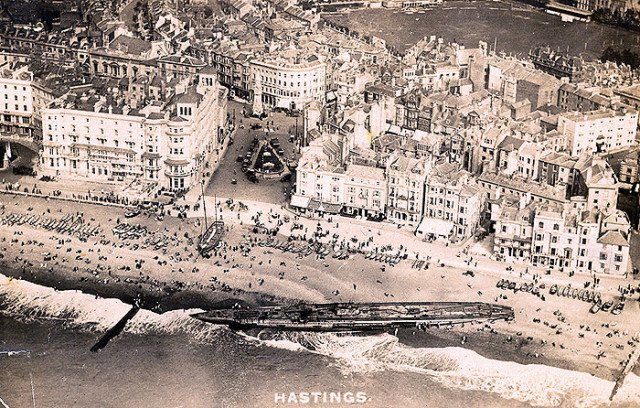
On September 16th, 1918, about 175 miles northwest of Cape Villano, the U-118 released a torpedo and sunk the British steamer, Wellington. The following month, on October 2nd, 1918, it sunk its second and final ship, the British tanker Arca, about 40 miles northwest of Tory Island. The surrender of the Imperial German Navy in November 1918 and the end of World War I, put the submarine out of business.
On February 23rd, 1919, the decision was made to take the U-boat to France to be broken up and used for scrap. In the early hours of April 15th, 1919, the dragging hawser broke off in a storm that came up while it was towed through the English Channel toward Naval Base Scapa Flow in Scotland. The submarine became adrift and later ran aground on the beach at Hastings in Sussex, not long after midnight, directly in front of the Queens Hotel.
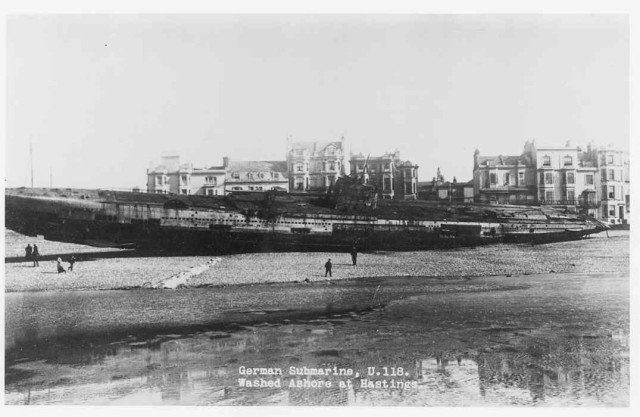
At first the British attempted to move the broken submarine– three tractors tried to return it to the water, and a French destroyer was summoned to break the ship apart using its guns. All attempts were unsuccessful, and the juxtaposition of the submarine to the public beach and the outdoor dining areas of the Queens Hotel prevented the use of more explosives.
The stranded submarine became a popular tourist attraction. Thousands of curious seekers traveled to Hastings that Easter, hoping to see it. It was under the authority of the coast guard, and the Admiralty permitted the Town Clerk of Hastings to charge a fee for visitors to climb on the deck. This went on for two weeks, during which the Mayor’s Fund raised to almost £300; the town used this for an event which was celebrating the local soldiers’ returning from the war.
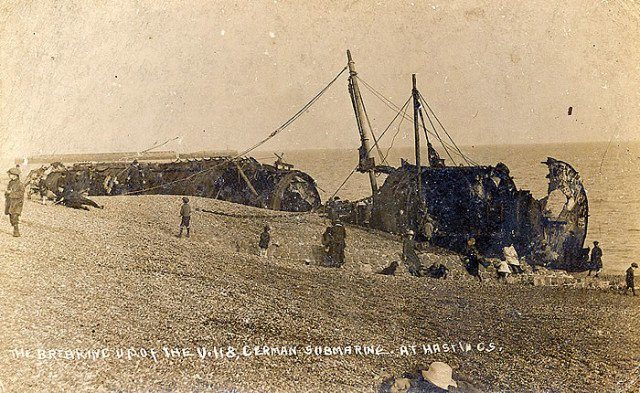
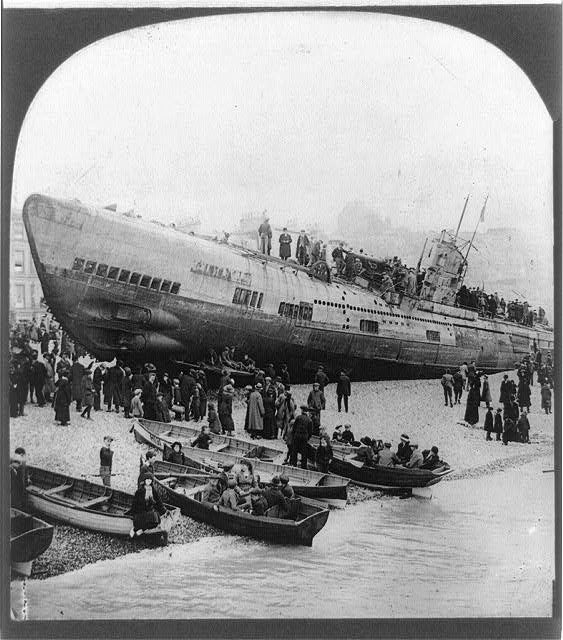
The task of escorting prominent visitors on tours around the interior of the submarine was guided by two members of the Coast Guard, William Heard, Chief Boatman and W. Moore, Chief Officer. The visits were ceased in late April when Heard and Moore became severely ill. Food poisoning was assumed to be the cause of their illness until the men’s condition became progressively worse.
Moore died in December of 1919, followed by Heard in February of 1920. An investigation revealed that a lethal gas, possibly chlorine released from the submarine’s damaged battery cells, may have caused abscesses on the men’s lungs and brains.
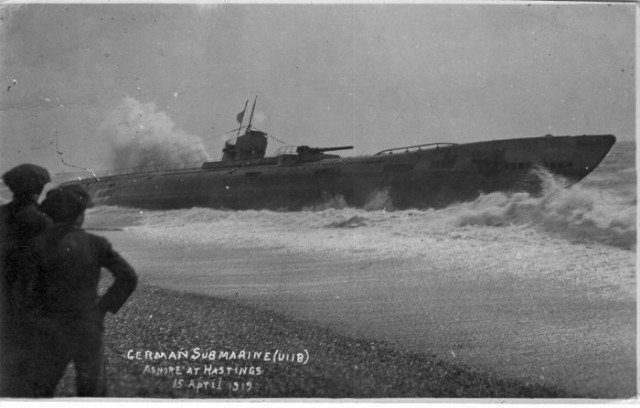
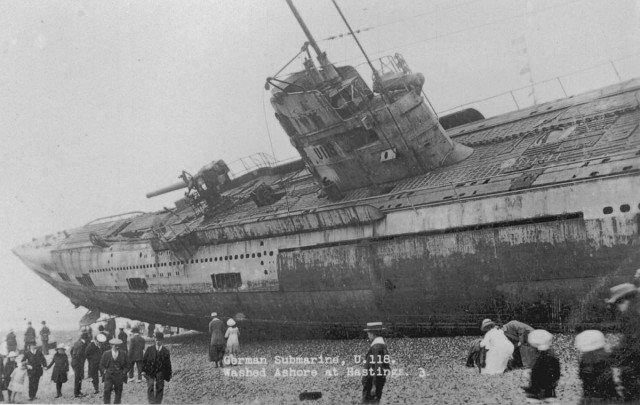
Although visits inside the submarine had stopped, tourists still came to be photographed alongside or on the U-boat’s deck. Children went down to the beach to throw rocks at it, and the population became annoyed by the never-ending stream of tourists. Finally, after the work done between October and December 1919, the U-118 was broken up and sold for scrap. The deck gun was given to the town as a memento, but due to deterioration from constant exposure to wind and waves, it was removed in 1921.
The locals wanted it restored and mounted in the town to keep the story alive but, sadly, the gun was scrapped. Possibly, that part of the ship’s keel has remained buried in the beach sand, but only a few people are motivated enough to take the chance of attempting excavation. Since much of the beach has been reclaimed since 1930, it would be a daunting project.
